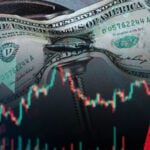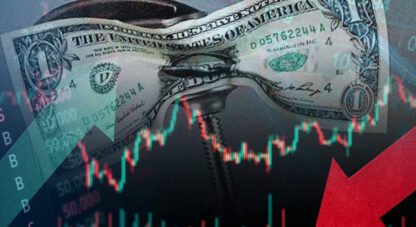Podcast: Play in new window

Tactical Short Strategy Conference Call – July 23, 2020
Q2 Recap Conference Call – July 23, 2020:
Good afternoon everyone, thank you for joining us for the second quarter recap conference call. As always, special thanks to our valued account holders. We greatly value our client relationships.
Since we have a number of first-time listeners on today’s call, we’ll begin with some general information for those of you unfamiliar with Tactical Short. More detailed information is available at mwealthm.com/tacticalshort.
The objective of Tactical Short is to provide a professionally-managed product that reduces the overall risk in a client’s total investment portfolio, while providing downside protection in a global market backdrop with extraordinary uncertainty and extreme risk.
This strategy is designed for separately managed accounts (SMA) – investor friendly with full transparency, flexibility, reasonable fees and no lockups.
We have the flexibility to short stocks and ETFs, we’ll also on occasion buy liquid, listed put options.
Shorting entails a unique set of risks: We are set apart both by our analytical framework and our uncompromising focus on identifying and managing risk.
Our Tactical Short strategy began the quarter with short exposure at 61%. Short exposure was targeted at 65% for much of the quarter – consistent with our view of an extraordinarily unstable market environment. Due to the high-risk environment for shorting, the S&P 500 ETF was the only short position during the quarter.
As always, we don’t recommend placing aggressive bets against the stock market. Even more so in today’s environment of uncertainty and acute market instability, a disciplined and professional approach to risk management is an imperative.
We highlight this key point every quarter: remaining 100% short all the time – as most short products are structured – is RISK INDIFFERENCE. For us, there’s no place for risk indifference on the short side. We believe disciplined risk management is absolutely essential for long-term success. We structured Tactical Short to ensure the flexibility to navigate through even the most challenging market conditions – the second quarter and past year having been extraordinary in this regard.
Updating Performance: Tactical Short accounts after fees returned negative 12.05% during Q2. The S&P500 returned positive 20.54%. For the quarter, Tactical Short accounts lost 59% of the S&P500’s return. As for one-year performance, Tactical Short after fees returned negative 6.74% vs. the 7.49% positive return for the S&P500.
We regularly track our performance vs. three actively managed short fund competitors:
First, the Grizzly Short Fund – which returned negative 29.82% during Q2. For one year, Grizzly returned negative 20.90%
Ranger Equity Bear Fund – returned negative 29.91% during Q2 and negative 23.82% for the past year.
Federated Prudent Bear Fund returned negative 17.72% for Q2 and negative 10.08% over the past year.
On average, Tactical Short outperformed our three competitors by 1,377 bps during the quarter and 1,153 bps over the past year.
Tactical Short has also significantly outperformed each of the bear funds since its inception. From the April 7, 2017, inception through the end of June, Tactical Short returned negative 18.55% – vs. the 40.15% return for the S&P500 – while on average outperforming our three competitors by 2,376 bps.
Also worth noting, on average, our three competitors lost 28.55% in 2019 – versus Tactical Shorts loss of 16.39%. One of our competitors last year suffered a 36.28% loss. David Above, Doug Below:
Thank you, David. Good afternoon everyone and thanks for being on today’s call. What an incredible environment. Wow. I hope everyone has been staying healthy, safe and sane. From both analytical and investment management perspectives, it’s difficult to envision a more challenging backdrop.
During last quarter’s call, I explained why I believed the global bubble had been pierced. The unprecedented global policy response was at the time spurring a risk market recovery. I viewed a bear market rally as the highest probability scenario. But the rally sustained through the entire second quarter and continues into July.
The Nasdaq100 rallied 60% off March lows and traded this week with a year-to-date gain of 25%. The S&P500 rallied 47%, fully recovering from March’s decline.
I didn’t believe there was a high probability for such a strong and sustained market advance. I was wrong. This bears repeating: I was wrong on market direction.
I was wrong – but Tactical Short nonetheless outperformed our three actively-managed competitors by almost 1,400 basis points – with those funds on average losing 25.8% during the quarter. It’s worth mentioning that Tactical Short also outperformed the Rydex Inverse S&P500 fund by 712 bps during the quarter – more than reversing Q1’s 278 bps underperformance. Over the past 4 quarters, Tactical Short outperformed by 1,562 bps.
I was wrong on the rally, yet Tactical Short accounts were not subject to the outsized losses suffered by some of our competitors. This is fundamental to our investment philosophy and risk-management focus: It’s imperative to avoid outsized losses.
Yes, I had a market view. But much more importantly, our analytical framework and objective analysis were clear on a key issue: the probability of being wrong on the market was uncomfortably high. We recognized that it was a highly unstable backdrop with extreme uncertainty. With risk being so elevated, the risk versus reward calculus for many types of short exposure was unfavorable. It was this analysis that drove positioning – not my or anyone else’s market forecast.
Importantly, the probability of a major short squeeze was highly elevated. There had been extreme amounts of shorting and hedging during the March/April period of market instability. Meanwhile, unprecedented global monetary and fiscal stimulus significantly raised the likelihood of a liquidity-induced rally spurring the unwind of hedges – together with a panicked reversal of short positions.
The potential for outsized losses from being caught in a disorderly reversal of shorts and bearish derivatives was high. I’ve been doing this long enough to have learned a lot of hard lessons the hard way. In such a backdrop, we don’t want to be short individual company stocks, sectors, or anything “high beta.” We definitely must avoid being in crowded shorts. We didn’t hold any put options during the quarter. Had we owned them we’d have managed them with great care.
Diligently assessing and managing risk is fundamental to our investment process for managing short exposure – and Q2 results again illuminate why we do things the way we do. Others either ignored or underappreciated short-side risk – and it cost them.
Our objective for Tactical Short is to provide a reliable hedging vehicle with a lower risk profile than other short products. Tactical Short performance lagged during March’s decline, but this was more than reversed during Q2.
The key to long-term performance on the short side is to avoid major losses – or “drawdowns” as they’re called in the industry. If you lose a third of your money – you have to make 50% just to return to breakeven. Moreover, pressure to recover from major losses tends to lead to excessive risk-taking and an only deeper hole. As some of our competitors experienced in 2019 and again during Q2, being short a portfolio of popularly shorted stocks – or “high beta” names – is too similar to Russian Roulette.
For us, it is essential to remain focused and disciplined – while striving to never let our guards down. To stay analytically sharp – even over grueling periods of challenging market conditions. [pause]
Market rallies tend to take on lives of their own – and this one has done all of that.
I’ve been on the short side going back to 1990. The market rallied strongly off March 2009 lows, but not with the intensity displayed during Q2. There was a ferocious short squeeze in 1998’s 4th quarter following the Long-Term Capital Management bailout. The S&P500’s Q2 gain was actually the strongest since Q4 ‘98. Thinking back, the short squeeze unleashed in 1991 at the onset of the Iraq war was the most brutal I’d witnessed – that is – until Q2’s squeeze and upside market dislocation.
The Goldman Sachs Most Short Index surged 56% during the quarter. The Nasdaq Composite returned 31.0%. Retailers jumped 44%, homebuilders 48% and the Philadelphia Oil Service Sector surged 36%.
In previous calls, I’ve highlighted Tesla as the poster child for short squeeze dynamics. Tesla began the quarter with 20 million shares short. The stock gained 556 points during the quarter, more than doubling in price. And to start Q3, Tesla quickly surged another 700 points, with year-to-date gains surpassing 300%. Some of the finest individual company short analysts in the business have been caught short Tesla. This is an environment where top-down policy and market dynamics trump micro company research.
The quarter experienced a dramatic loosening of financial conditions, as signaled by my mosaic of indicators. After surging in March, credit default swap prices – (CDS) – collapsed – investment-grade, high-yield, and bank debt. The iShares Investment-Grade Corporate Bond ETF surged 9.7% for the quarter, with a first-half gain of 6.5%. The iShares High-Yield ETF rallied 7.4%, reducing y-t-d losses to 5%. Leveraged loans posted double-digit Q2 returns.
The Fed’s decision to purchase corporate debt – and even high-yield ETFs – incited a dramatic repricing throughout the corporate credit universe – marking a major escalation in interventionist policies. The resulting tsunami of ETF inflows has been a key bubble mani-festation. I’ll add that corporate bond ETFs have been a prime facet of distorted bubble markets over recent years. These structures often take risky and illiquid corporate credit and, through the alchemy of financial intermediation, transform them into highly attractive perceived safe and liquid ETF shares. A run on ETFs was integral to March’s market dislocation. Federal Reserve policies reversed the run – and then incited tens of billions to flood into corporate bond ETFs.
We titled this call “Confirmation of the Global Bubble Thesis.” Central bank distortions, resulting loosening of financial conditions, and highly speculative market rallies have very much been a global phenomenon. Germany’s DAX rallied 24% during Q2, and Japan’s Nikkei was up 18.0%. The Shanghai Composite gained almost 10%, with China’s growth-oriented ChiNext surging 31%.
ECB assets have expanded $1.7 TN since March to $6.3 TN. European periphery bond markets rallied powerfully – right in the face of skyrocketing fiscal deficits. Italian yields sank 26 bps during Q2 to 1.26% – about half the March high, and Greek yields fell 43 bps to 1.2%, down from March’s 3.67%. Bond prices were further boosted by the recent EU COVID stimulus plan. That Italy and Greece can today borrow for 10 years at about 1% illuminates a historic market bubble distortion.
Throughout the emerging markets, CDS prices collapsed all the way back to February levels, this despite faltering economies, spiraling deficits and COVID uncertainties. EM equities, currencies and bonds all rallied – and for the most part this continues.
Global markets were highly synchronized coming into the year, a factor certainly contributing to March’s crisis dynamic. Global central banks had been pressing monetary stimulus, with financial conditions extraordinarily loose throughout international financial markets. Leveraged speculation had been running hot with mounting excess – creating acute global market vulnerability ahead of the pandemic.
And in unison, March’s bursting bubble dislocation forced global policymakers to employ extreme stimulus measures. Markets, largely in unison, rallied sharply irrespective of underlying fundamental factors – in a dynamic co-rroborating the global bubble thesis.
The Fed’s policy response has been extraordinary. Federal Reserve assets expanded $3.0 TN in 15 weeks – reaching almost $7.2 TN. Yet recall that QE actually began last September with Fed assets at $3.8 TN. The Fed last year adopted so-called “insurance” policy stimulus in response to late-cycle repo market instability. This dousing of fuel on a speculative fire came back to haunt the system in March.
Monetary excess, however, has not been confined to the Fed’s balance sheet. U.S. M2 money supply expanded an incredible $3.0 TN in less than five months, an unparalleled monetary expansion fueled by monetary and fiscal stimulus.
Extreme monetary inflation is a global phenomenon – led by unrelenting Chinese money and credit excess. China’s Total Aggregate Financing expanded $490 billion – in U.S. dollars – during the month of June, up from May’s $455 billion expansion. China’s measure of system credit surged a remarkable $3.0 TN during the first-half, 43% ahead of comparable 2019 and a full 80% ahead of first-half 2018 growth. In the face of economic contraction, aggregate financing inflated a remarkable $4.4 TN, or 12.8%, over the past year – in one of history’s most spectacular credit expansions.
China’s M2 money supply expanded $496 billion during June to $30.5 TN, an almost 20% annualized growth rate. Over six months, China M2 surged $2.12 TN, or 15% annualized. For comparison, U.S. M2 rose a record $950 billion during 2019. China more than doubled this amount – in only six months. And with U.S. M2 up over $3 TN, combined first-half Chinese and U.S. “money” supply growth approached an incredible $5.2 TN.
David: This is a number worth repeating: The U.S. and China combined to expand “money” supply by over $5 TN in only six months. And, of course, central banks and credit systems from around the globe have contributed to this epic monetary inflation – unassailable evidence of historic bubble excess.
That’s right David. But I believe the global bubble has been pierced – akin to the mortgage finance bubble in the Spring of 2007 – though the rapid deployment of unprecedented stimulus clearly reignited speculative market bubbles.
Bubble analysis points to crucial differences between the first QE back in 2008 and the latest evolution of Fed QE operations. For starters, it was over 15 months between the 2007 subprime blowup and the Fed resorting to its experimental $1.0 TN QE program. Stocks and corporate Credit had been correcting – speculative impulses and bubble dynamics had been deflating – for months prior to QE1 deployment. The maladjusted U.S. bubble economy had commenced necessary restructuring.
This cycle’s dynamics are in stark contrast. The crisis – and Fed response – hit with stocks and corporate Credit only days from record high prices. Rates were almost immediately slashed to zero – and within weeks the Fed had injected almost $2.5 TN of liquidity.
Speculative dynamics were quickly reenergized. Instead of being disciplined, speculators were further emboldened. Dysfunctional market structures at the heart of March’s dislocation – including the massive ETF and derivatives complexes along with the global leveraged speculating community – were shored up.
Importantly, 2008’s QE1 worked to accommodate speculative de-leveraging. This cycle’s crisis response is promoting profoundly divergent dynamics. The Fed’s immediate adoption of massive QE in March inhibited speculative deleveraging – later inciting dangerous speculative excess. Trillions of QE sparked a massive short squeeze, an unwind of bearish hedges and a particularly manic period of speculation – all in the face of an unfolding global pandemic.
And, trust me on this, there’s nothing like short squeezes and derivative players caught on the wrong side of the markets to really get the marketplace’s speculative juices flowing. Q2 experienced the first major synchronized global short squeeze and derivatives unwind.
Global financial structure has developed remarkably since the last crisis. Leveraged speculation, derivatives trading, and ETF inflows nowadays proliferate in every nook and cranny of international financial markets. Markets became increasingly interconnected – internationally and across various asset classes. And the fragility of this structure was illuminated in March. During Q2, this structure was reflated – stoking further global bubble excess in the process.
Thinking back to record U.S. stock prices on February 18th and the markets’ disregard for pandemic risk – the monetary backdrop had fostered a huge divergence between inflating securities prices and deflating economic prospects. Egregious monetary inflation only caused this chasm to blow out to unbelievable extremes.
We believe U.S. and global economies will face vigorous headwinds over the coming months and years. Yet there are characteristics with this pandemic outbreak that play right into speculative markets. Lockdown measures created a precipitous drop in economic activity – at home and abroad. In the U.S., tens of millions of jobs were suddenly lost. Yet markets could confidently anticipate that reopening would entail rapid recoveries in spending and activity. For the markets, the degree of recovery was not that pertinent.
A speculative marketplace was going to take direction – not from underlying fundamentals – but from positive news flow. Reopening ensured an abundance of positive headlines – unemployment claims down, monthly payrolls up, sharp percentage increases in retail spending, big jumps in manufacturing and services PMI surveys, and so on. Internationally, China was sure to slam on the accelerator. There would be pent-up demand. And record low U.S. mortgage rates – along with demand for housing in the suburbs – would support a robust summer housing season.
At the same time, the international race to develop COVID treatments and vaccines would contribute to positive news flow. Moderna’s positive phase 1 vaccine trial has been good for at least a couple market rallies. The market rose Monday on AstraZenaca’s vaccine trial.
Meanwhile, highly speculative bubble markets became divorced from underlying fundamentals. It didn’t really matter that U.S. COVID cases spiked higher – that major state economies in California, Florida and Texas would be forced to slow reopenings and reimpose restrictions. Markets are content to disregard economic ramifications. How could this be? Because COVID resurgence ensures another round of fiscal stimulus – with Republicans starting negotiations at $1 TN – and Democrats at $3.5 TN.
The Federal deficit surged to a record $864 billion in June, crushing April’s $738 billion. The deficit reached an unprecedented $2.74 TN through nine months – and $3.0 TN over 12 months. The CBO had projected a fiscal year deficit of $3.7 TN – though additional stimulus could push this shortfall closer to $5.0 TN – approaching 25% of GDP.
10-year Treasury yields under 60 bps (or 6 tenths of 1%) confirm that markets these days couldn’t care less about massive deficits. Why should they? Any increase in market yields will surely provoke further rounds of QE – with additional Fed liquidity inflating securities values across the board – or so the thinking goes. Safe haven global yields – negative in Germany, France, Switzerland and elsewhere in Europe, near zero in Japan and at historic lows for scores of countries – are evidence of bubble dynamics. From a macro perspective, we view ultra-low safe haven yields as signaling persistent global fragilities and unsustainable market bubbles. Moreover, gold, silver – the entire precious and even industrial metals complex – indicates a frail global financial system that will require massive ongoing central bank monetization. We see recent dollar weakness as also confirming the bubble thesis with mounting U.S. vulnerabilities.
I still see COVID-19 as the catalyst for the piercing of history’s greatest global bubble. I define a bubble as a self-reinforcing but unsustainable inflation – generally fueled by credit and speculative excess – and typically underpinned by government intervention and resulting market dysfunction. Similar to “tech” and mortgage finance bubble aftermaths, in hindsight today’s global bubble will have been obvious to about everyone.
History informs us that things can get crazy at the end of cycles. The degree of craziness we’ve been witnessing co-rroborates the thesis of the waning days of a super cycle bubble.
While predicting the behavior of speculative bubbles is risky business, I remain confident in the macro analysis.
Years and decades of flawed policies brought about the current predicament: The maladjusted U.S. bubble economy will require ongoing massive fiscal spending. I’ll quote Jamie Dimon from last week’s JPMorgan conference call: “This is not a normal recession. The recessionary part of this you’re going to see down the road.” (end quote)
I concur with Dimon: downturns unfold over months and even years, and we’re in the initial phase of what I anticipate will be prolonged economic and financial restructuring.
As for inflated asset market bubbles, they will demand open-ended monetary stimulus. And all this QE and intervention only exacerbates instability. I would argue today’s extreme divergence between inflating speculative bubbles and deflating fundamental prospects has only one parallel: 1929. And this highlights a dangerous flaw in contemporary finance. It works almost miraculously – but only so long as it’s inflating. And policy measures to hold crisis at bay work to further inflate bubble excess. Rising market prices can be self-reinforcing – bolstering confidence and supporting economic activity. But speculative finance doesn’t function in reverse. Recall that it was only nine trading sessions between all-time market highs and the emergency March 3rd FOMC meeting. It was only weeks from record prices to near financial meltdown and Trillions of stimulus. The downside quickly turns disorderly.
David Question: Derivatives
I’ll briefly shift to the derivatives markets. Sure David. I still vividly recall watching the 1987 stock market crash on a Telerate screen early in my career. After the crash, there was focus on this new “portfolio insurance” strategy viewed as being a major contributor to market dislocation. I believe today’s colossal global derivatives markets played an instrumental role in March’s downside dislocation – and then again for the upside dislocation experienced during Q2.
Derivatives trading has been an important facet of various market strategies for a while. But this marketplace has become more powerful and destabilizing. Institutions increasingly rely on derivatives to hedge their investment portfolios. Fear of missing out – FOMO – forces even the cautious to be fully invested – many with plans to use derivatives to hedge downside risk when necessary. The hedge fund community is a heavy user of myriad derivatives in various strategies. And over recent years there has been a proliferation of retail online options trading.
In total, the derivatives complex creates trading dynamics that exacerbate both upside and downside market moves. There was significant hedging going into the March dislocation. And when markets eventually broke to the downside, the sellers of market “insurance” were forced to aggressively short stocks and instruments to hedge their rapidly escalating market exposures. As unfolded in 1987, waves of intense selling can quickly overwhelm the marketplace. Buyers will completely back away, creating a liquidity vacuum.
It’s important to appreciate that the general market cannot effectively hedge risk. Think of it this way: In theory, the entire marketplace could go out and purchase out-of-the-money put options – with all participants then believing they’re protected against any significant market fall. But in the event of a meaningful decline, the sellers of all this “insurance” must establish short positions that will generate cash-flow to pay out on these hedging contracts. In a precipitous drop, selling – so-called “dynamic trading” – related to this market insurance would completely overwhelm marketplace liquidity.
In reality, it is implausible for a large portion of the marketplace to offload market risk – there is no one with the wherewithal to effectively absorb this amount of exposure.
Derivatives-related selling played a major role in March’s illiquidity and dislocation – crisis dynamics provoking historic liquidity injections from the Fed and global central bank community. The overwhelming central bank response then sparked a market rally, an unwind of hedges and, somewhat later, huge bullish derivatives-related buying.
As the marketplace turned increasingly speculative – as greed supplanted fear – derivatives were used to speculate on big upside moves in stocks, sectors and the general market. Tesla and the big Nasdaq stocks saw huge spikes in options trading. Similar to that experienced on the downside, there has been large buying of out-of-the-money call options. Upside moves then turn self-reinforcing – as those that sold the calls must buy the underlying instruments to hedge their rapidly increasing exposures.
This gets complex – yet the key point is that the widespread use of derivatives strategies exacerbates market instability. The Fed’s response to the March dislocation sparked a surge in derivatives-related buying that evolved into a speculative melt-up – at least partially fueled by derivatives-related leverage. Such speculative excess creates market vulnerability – to a reversal that could materialize into self-reinforcing derivatives-related selling and possible dislocation.
Shifting gears and repeating a previous comment, as an analyst of credit and bubbles, I look at China in awe. As noted earlier, China’s systemwide credit growth surged to $4.4 TN over the past year. Chinese credit growth has accelerated while its economic expansion has slowed markedly. Moreover, this late-cycle boom is surely promoting a problematic surge in non-productive credit – unsound borrowers spending on uneconomic projects. And throw into the mix a liquidity-fueled manic stock market bubble. These are central to what I refer to as “terminal phase” excess with exponential rise in systemic risk.
For now, rampant state-directed lending is holding crisis dynamics at bay. But there are cracks. Recall that China last summer experienced the failure of a couple smaller banks, which sparked heightened money market stress and a major tightening of credit availability for China’s vulnerable small banking sector. Just last week, several smaller banks faced a run on deposits. A Bloomberg article included an ominous warning: “Confidence in the $43 trillion banking system is eroding among the nation’s more than 1 billion account holders, threatening a cornerstone of China’s rise into an economic powerhouse.”
I fear bubble dynamics ensure an inevitable crisis of confidence in Chinese finance. And while China’s economy has been in post-COVID recovery, economic prospects are bleak. With confidence shaken, I expect Chinese consumers to spend more cautiously. China’s historic apartment bubble is vulnerable. Moreover, China’s bloated export sector will struggle in a backdrop of prolonged global economic weakness. In particular, Chinese manufactures and banks alike will be hit by faltering EM economies. There are as well efforts afoot to relocate supply chains and decouple from China.
David: Similar to COVID and myriad risks, markets have been content to disregard the rapid deterioration in U.S. and China relations. The administration’s order to vacate China’s Houston consulate in 72 hours is a major escalation. There’s an escalating cold war with little prospect of warming. The administration has ratcheted up tensions on various fronts, most notably on Chinese technology, Hong Kong and the South China Sea. Will Beijing be tempted to use the current crisis environment to begin tightening its grip on Taiwan? At the minimum, it’s becoming a more hostile bi-polar world – with far-reaching ramifications for global economies, markets and geopolitics.
And David, in a speech this morning Secretary of State Pompeo called upon the Chinese people to change the direction of China’s community party – yet another significant escalation to further infuriate Beijing. And as we’ve been discussing in our team meetings, we’re now just over three months from U.S. elections. The likelihood for things to turn messy are high. With unusual numbers of mail in ballots, election results will be delayed and possibly disputed. At this point, Joe Biden has a significant lead in the polls. A clean sweep by the Democrats is a distinct possibility. Biden has said he’ll raise the corporate tax rate to 28%, inflicting a hit to earnings already under significant pressure.
Wall Street analysts are already crafting a bull case for a Democratic sweep: a so-called “unified government response to COVID”. At some point, uncontrollable structural deficits won’t be viewed so bullishly. One scenario to ponder: if markets remain highly speculative, the Fed might hesitate to aggressively employ additional stimulus. Without an expanding Fed balance sheet, the bond market may take a fresh look at the endless pipeline of trillions of new Treasuries. Could supply actually begin again to impact bond prices? A strange thought, I know.
On another front, our nation is so deeply divided. Social tensions are running high. The pandemic is worsening inequality. The booming securities markets only exacerbate inequality and crystalize perceptions of an unjust system. And the Federal Reserve is locked in policies rightly perceived as favoring markets and the wealthy. A Democrat sweep would usher in a unified approach to COVID – and likely a unified approach to wealth redistribution. The Fed today welcomes the massive fiscal stimulus it views as necessary for economic recovery. The Fed’s job turns much more difficult when it becomes apparent that enormous uncontrollable fiscal spending has become an enduring phenomenon.
We’re in the summer doldrums with market enthusiasm running sky high. I expect reality to be setting in by this fall. All this money printing resolves nothing – it indeed only makes a dangerous situation even more so. Dysfunctional markets have lost their capacity to self-adjust and correct. Policymakers are trapped. Inflationism is out of control. I fear this only sets the stage for the most challenging financial, economic and social crises of our lifetimes. I’ve excluded geopolitical from this list on hope alone. Most regrettably, we’re only a significant market downdraft from a likely crisis of confidence in the Federal Reserve, in Washington policymaking, the markets and finance – both at home and abroad. I don’t ever recall being so alarmed by the degree of market complacency and bullishness.
David, back to you.
FREQUENTLY ASKED QUESTIONS:
What is the purpose of the Tactical Short Strategy?
The McAlvany Wealth Management (MWM) Tactical Short is designed to generate positive returns from downside volatility within the equities market. The strategy is not intended to necessarily hedge an equity portfolio dollar for dollar, but will instead strive to opportunistically capture gains as particular stocks and/or sectors decline in value. The objective of our short offering is to provide a mechanism for reducing a client’s overall investment portfolio risk profile while providing downside protection during periods of market instability.
The Tactical Short is described as non-correlated instead of consistently negatively correlated. Can you explain?
A constant negative correlation would imply always being positioned fully short, thereby reflecting the direct inverse returns of the asset mirrored. Such approaches are indifferent to risk. It is fundamental to our strategy to be selective and willing to wait for more favorable market conditions and compelling opportunities. Our focus on risk versus reward metrics dictates that there will be periods when we will be minimally short. Our decision-making process is driven by intensive analysis of a mosaic of indicators, from both “top down” and “bottom up” perspectives. Depending on our analysis of the backdrop, we will have the flexibility to position either opportunistically or defensively – to expand short exposures in favorable backdrops or significantly reduce exposure to mitigate losses during highly unfavorable environments for shorting. Positioning the strategy as “non-correlated” is consistent with the objective of avoiding the type of heavy losses suffered by negatively correlated funds during bullish periods.
Is this a fund with pooled assets, or will investors have separately managed accounts (SMA)?
We have chosen to structure the Tactical Short offering in separately managed accounts to allow for advantageous investor transparency, liquidity and, on occasion, some tailoring to better suit the needs of an institutional or individual investment mandate.
What kind of accounts can be opened?
While the Tactical Short offering was developed with the discerning institutional investor in mind, it may be appropriate for individual, trusts or corporate accounts.
Can I transfer a retirement account?
That’s not possible. The nature of shorting requires that securities be borrowed prior to consummating a short sale. Regulations mandate a margin account for such strategies, and margin accounts are prohibited for qualified plans (IRA’s and other retirement vehicles).
Is positioning a portfolio to benefit from declines and volatility the only investment style MWM offers?
Definitely not. While MWM specializes in alternative asset investment management, we do offer traditional portfolio management along with our natural resource and long/short strategies. Tactical Short is a unique offering intended to compliment other risk asset allocations held with MWM or elsewhere.
What do you see as an appropriate percentage allocation to something like the Tactical Short from an overall portfolio mix perspective?
An allocation to our non-correlated Tactical Short adds value by reducing overall investment portfolio downside risk. We would suggest exposure to the Tactical Short in the range of between 5 and 20% of risk assets to help reduce overall portfolio volatility, enhance liquidity and provide meaningful downside protection. For example: $2,000,000 in total equities and risk asset exposure would typically benefit from a $100,000 to $400,000 Tactical Short allocation. With an allocation above 20%, we would assume that an investor has chosen our product to place a directional bet on a declining market.
Are there Minimum account sizes?
Institutional investors would generally have a minimum account size of $1,000,000 while, where appropriate, qualified individual investors would be considered with minimum account sizes at inception as low as $100,000.
What are management fees for Tactical Short?
1.0% per year paid quarterly in advance (25 bps per quarter).
If I am utilizing margin in the Tactical Short, will my account be charged for margin borrowing expenses? Are there other expenses I should be aware of?
While the portfolio manager seeks to minimize such costs, there are typically expenses associated with borrowing securities. Borrowing costs are generally small, with the exception of hard-to-borrow securities. Traditionally, borrowing costs were offset by the return on an account’s cash collateral.
Why would I choose a MWM Tactical non-correlated account instead of a short ETF or options strategy?
We believe our strategy is superior to competing “bear” products and instruments. Being fully short all the time simply doesn’t work. Options strategies are risky and tough to execute successfully. In our eyes, risk management is paramount. The key to success on the short-side is having the flexibility to navigate through various market environments. To do so successfully demands a disciplined investment process coupled with a sound analytical framework. Importantly, there’s no substitute for experienced active-management on the short-side. In our view, our new offering incorporates the most seasoned portfolio manager with the most compelling analytical perspective, investment process and philosophy available in the marketplace.
Does MWM custody assets? If not, who is the custodian?
We do not custody assets. Our preference is to retain the services of a preeminent third-party custodian, an arrangement that facilitates online access to account holdings and myriad amenities common to a brokerage account. Tactical Short client assets are held at Interactive Brokers.
Can I send additional funds to my account in the future?
Sure. Additional funds can be added in any quantity. Because Tactical Short accounts can be rebalanced daily, there should be minimal delay in adjusting positions sizes to incorporate flows into (or out of) your account.
Will this offering be closed at some point to new money?
We do not at this time anticipate capacity issues that would cause us to close the Tactical Short to new investors or restrict inflows.
Do I need to reserve a place?
That’s not necessary. We would, however, highly recommend funding an account and then to allow us to determine the appropriate time to allocate assets. This is much preferred to beginning the process in the middle of unstable market conditions.
Are assets always invested on the short side?
No, there will likely be periods when we choose not to hold short exposure. Our analytical framework and proprietary indicators assist us in gauging both when conditions are more favorable for shorting along with the most attractive composition of short exposures (i.e. stocks, sectors, the market, etc.) from a risk versus reward perspective. When conditions are expected to be unfavorable, the Tactical Short is content to watch from the sidelines (sitting in cash and avoiding short exposures). Such a tactical pivot from being opportunistically short to defensively positioned creates the flexibility necessary to capture gains and then safeguard them from major market advances.
If Tactical Short operates with hedge fund-like versatility, why not charge the standard “2/20” (2% management fee and 20% of profits)?For one, we do not share the typical hedge fund mindset. By keeping fees to a minimum, we endeavor to develop long-term partner relationships with our investors as we together navigate through the vagaries of market cycles. We did not develop our new product with the intention of getting rich from the next market downturn or financial crisis. We were motivated by what we saw as a glaring lack of quality flexible short-side products – the type of strategy that savvy investors could live with comfortably during these uncertain and unsettling times.
When you are not short how are funds allocated?
It’s a little confusing. Unlike long investing, cash is not used up in the process of borrowing and selling securities short. Whether fully short or not short at all, account assets remain mostly in Treasuries and/or cash-equivalents. Some of the cash holdings are used as collateral against short positions, but this cash remains in the account. So even in periods of market stress, Tactical Short assets should remain safe and highly liquid.
How liquid are the funds in my account?
Funds are generally available same day. One of the benefits of a separately managed account is that requests for same-day liquidity can be accommodated. Short positions will also be highly liquid. In the event an account is liquidated, it will be possible to unwind (“cover”) short positions upon request and return cash collateral on a standard T+3 settlement basis. No “gates” here.
Can I add money to an account in the future?
Yes. There is a minimum to open an account but should you desire to increase your allocation to the tactical non-correlated theme you may do so at any time.
If future gains boost the size of my account, would you recommend allowing my short allocation to increase over time or instead employing a total portfolio re-balancing approach?
Having access to liquidity at market bottoms can be highly advantageous to value-conscious investors. We’re going into our new venture with the assumption that Tactical Short’s ability to create liquidity in down markets creates an enticing long term value proposition for astute investors. While tactical decision-making will be a primary management focus of our short offering, we fully expect our long-term investors to engage in cyclical allocation decisions consistent with their individual goals and circumstances. As partners, we’re committed to doing our very best in offering valuable insight as well as attractive investment alternatives to best serve our investors as they strive to generate and preserve wealth.
- Don’t be risk indifferent – unwise to maintain 100% short exposure all the time
- Don’t disregard the macro backdrop
- Don’t ignore the market
- Don’t disregard portfolio beta
- Don’t pretend long/short strategy mitigates risk
- Don’t only short stocks
- Don’t maintain concentrated short positions
- Don’t only short a market index
- Don’t have illiquid positions
- Don’t rely on potentially problematic third-party derivatives
- Don’t invest short collateral in potentially risky and illiquid instruments
- Don’t be a “one-trick pony” – (i.e. company research, index or quantitative focus)
Do’s
- Daily intensive, disciplined risk-management focus
- Wisely adjust exposures based on market risk vs. reward backdrop
- Be flexible and opportunistic with individual short positions and overall exposure
- Incorporate experienced top-down macro research and analysis
- Search for opportunities rather than fight the market
- Intensive beta management:
- Protect against short squeezes and “upside beta” issues
- Guard against high market correlations
- Have as many tools in the toolbox as possible:
- Short stocks, sectors, indices, various asset-classes, global perspective,
- Liquid put options
-
Incorporate a technical analysis overlay with risk management focus
-
Protect against potential systemic risks:
- Avoid third-party derivatives
- Liquid put options
- Vigilant cash and liquidity management
-
Incorporate the best of micro, macro and technical analysis
For more information or to inquire about opening an account for the Tactical Short Strategy, please contact us: [email protected]















